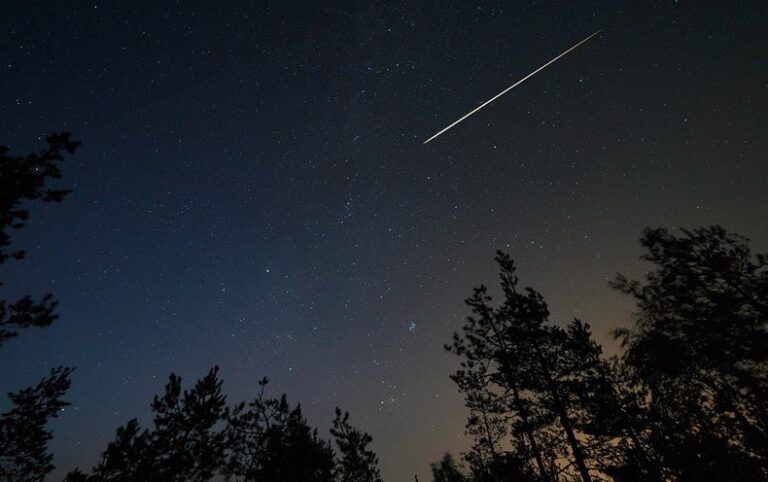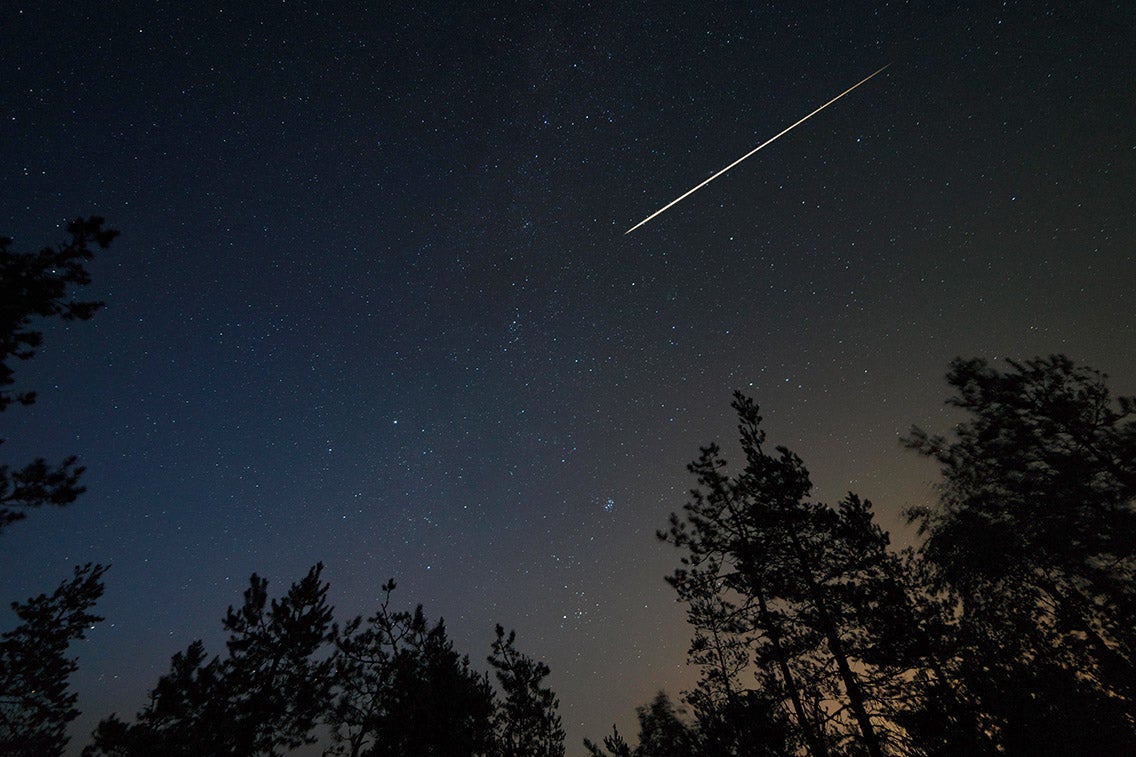
[ad_1]

Who doesn’t love seeing a meteor?
The experience of that sudden flash and streak of light turning your head and catching your sight as it flares into existence and fades, all within a split second, never fails to elicit a gasp. I’ve seen thousands of shooting stars, and each one has brought me just as much delight and wonder as the very first I witnessed as a kid.
If you’ve spent much time under the night sky, chances are good that you’ve seen one, too. Roughly a half-dozen can be seen every hour from a dark site anywhere on Earth, randomly appearing somewhere above your head and zipping across the sky. The longer you look up, the better the odds are of spotting one.
Centuries ago no one knew what exactly they were; the term “meteor” comes from the Greek for—literally, if somewhat vaguely—“thing high up.” Many ancient observers assumed (correctly, to some extent) that shooting stars were atmospheric phenomena. But meteors, of course, don’t actually originate in the air. We now know they come from space. The ones you see at random, called sporadic meteors, are tiny bits of rock or (more rarely) metal—shrapnel scattered from asteroids smashing into each other as they move around the sun. When, by chance, such debris finds its orbital path intersecting with that of Earth, it can collide with us.
Or it can collide with our air, at least. Earth’s atmosphere technically extends several thousand kilometers out from our planet, but it is so rarefied across most of that volume that an approaching meteoroid (the small bit of cosmic shrapnel that becomes a meteor) only begins to feel its effects roughly 100 kilometers above the surface. Moving at hypersonic speeds—between 40,000 and a staggering 260,000 kilometers per hour, depending on the direction from which it approaches our planet—the meteoroid rams the air ahead of it. Compressing a gas raises its temperature, and hitting the air that hard heats it a lot. The compressed air starts to glow, and when it reaches a temperature of about 2,000 degrees Celsius, the solid material in the meteoroid starts to vaporize. That material, facing an onslaught of air screaming past it, blows off in a process called ablation.
The trail of vaporized rock or metal that is left behind, called a train, can glow for a while; some have been seen lingering for many minutes. High-altitude winds can blow the material in these persistent trains into strange and lovely shapes, making for amazing time-lapse videos.
Most meteors appear white to the eye, but if they’re bright enough (or photographed with a sensitive camera), they can appear to glow in many different colors. Most of that depends on the composition of the meteoroid itself: yellow comes from sodium, green from magnesium and blue-violet from calcium, all of which are common meteoroid ingredients. You might also catch a flash of red, which is usually from the oxygen or nitrogen in our atmosphere glowing from the intense heat.
Mind you, the brightest part of this phenomenon—that is, the luminous apparition that is the meteor itself—usually lasts only a second or less. During that brief time, the meteoroid might travel dozens of kilometers horizontally through Earth’s atmosphere while also plummeting 10 or more kilometers. Then it vaporizes completely, while it’s still dozens of kilometers above the surface. Eyewitnesses may think every meteor they see is bound to strike the ground and leave behind a smoldering crater, but that’s just an illusion born of perspective. In reality almost all meteoroids are at most a millimeter in size—making them far too small to survive the fiery plunge to reach the surface. Instead they burn up at altitudes several times higher than a jet flies.
If a meteoroid is big, it can become dazzlingly bright during its brief atmospheric journey. We call these fireballs or, more technically, bolides, and they can emit enough light to cast shadows. Once, when I was a teenager, I saw a fireball that was so bright that it left an afterimage on my eye. Later I did some basic math to ballpark its mass and figured its source meteoroid was likely about the size of a grapefruit!
Although the vast majority of meteoroids are quite tiny, they add up: estimates vary, but general consensus holds that somewhere between 50 to 100 metric tons of cosmic junk hits Earth every day.
In rarer cases, if a meteoroid is truly large—roughly a meter or more in size—things change. It can flatten from the savage forces it experiences as it decelerates in a process called, and I love this, pancaking. The meteoroid ruptures and falls apart into chunks, and then those can experience huge pressure and heating and crumble in turn. This happens in a cascading series until either the entire meteoroid is vaporized or the individual pieces slow enough that they no longer heat the air in front of them.
In the latter scenario, the meteoroid’s fragments will then simply free-fall to Earth in a “dark flight” period that can last several minutes, cooling them to frigid temperatures. When they finally hit the ground, we call them meteorites. Because they fall from such great heights, meteorites from a single large meteoroid can be strewn over a large area, making them hard to find.
Sometimes a metal detector can help. Although metal meteoroids are rarer than their rocky kin, meteorites that are mostly metal make up a larger share of the total that are found than you might expect. That’s in part because they’re more resistant to erosion, both during their atmospheric entry and their sojourn on the surface, so they last longer. And their greater durability also means they can be twisted into truly bizarre shapes, making them stand out. I have a few meteorites myself, and it’s the ones made of metal—mostly iron and nickel, with a smattering of other elements thrown in—that I love the most. They can be truly beautiful—the equal, in my opinion, of any precious gem.
And they have great scientific value, too. Meteorites are sourced from asteroids scattered across the solar system, which offers us a chance to study those remote bodies without having to send expensive spacecraft. Many are relatively unchanged since the birth of the solar system—some are even older than the planets themselves—and thus can help fill in these early chapters in our cosmic history. Much of what we know about how Earth formed, for instance, comes directly from studying meteorites.
Meteor showers, on the other hand, come from bits of rock shed from comets. When Earth plows through these debris clouds, we can see many meteors, and because of perspective, they all appear to radiate from one point in the sky. These chunks tend to be small and fragile, and they don’t survive long enough to hit the ground. Showers come at fairly predictable times every year, so they can be a reliable source of astronomical joy.
If you’re able, the next time you’re out in a dark spot on a moonless night, be on the lookout for these ephemeral cosmic visitors. You don’t have to make a wish: just keep your eyes open, your head up and your sense of wonder at the ready.
[ad_2]